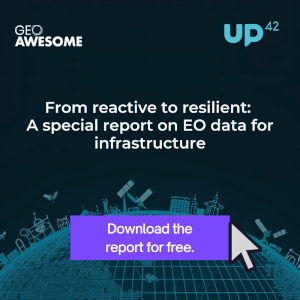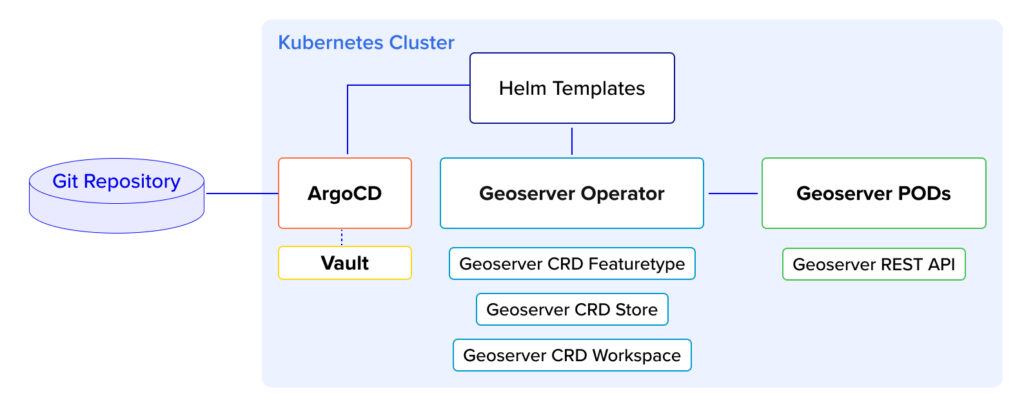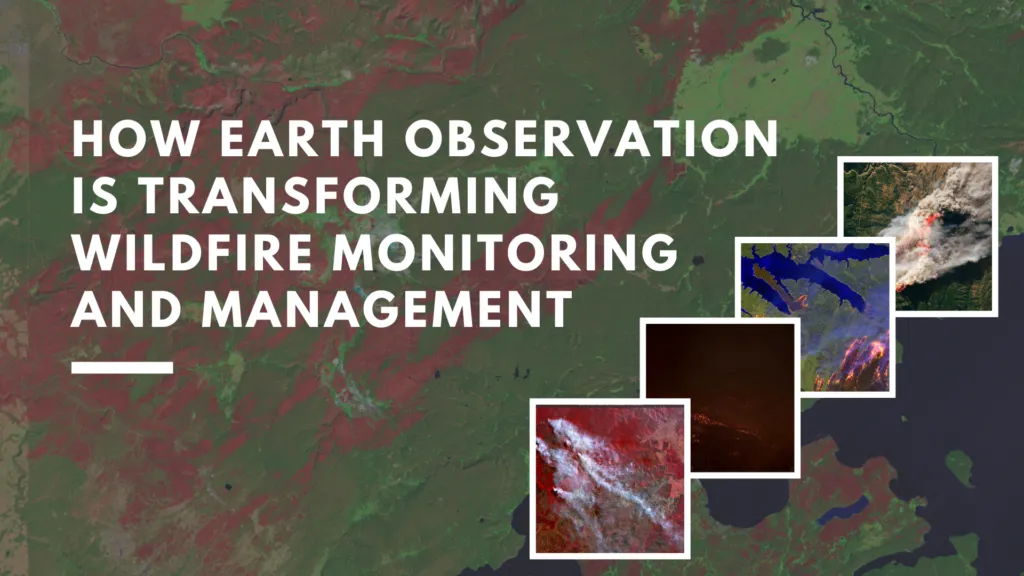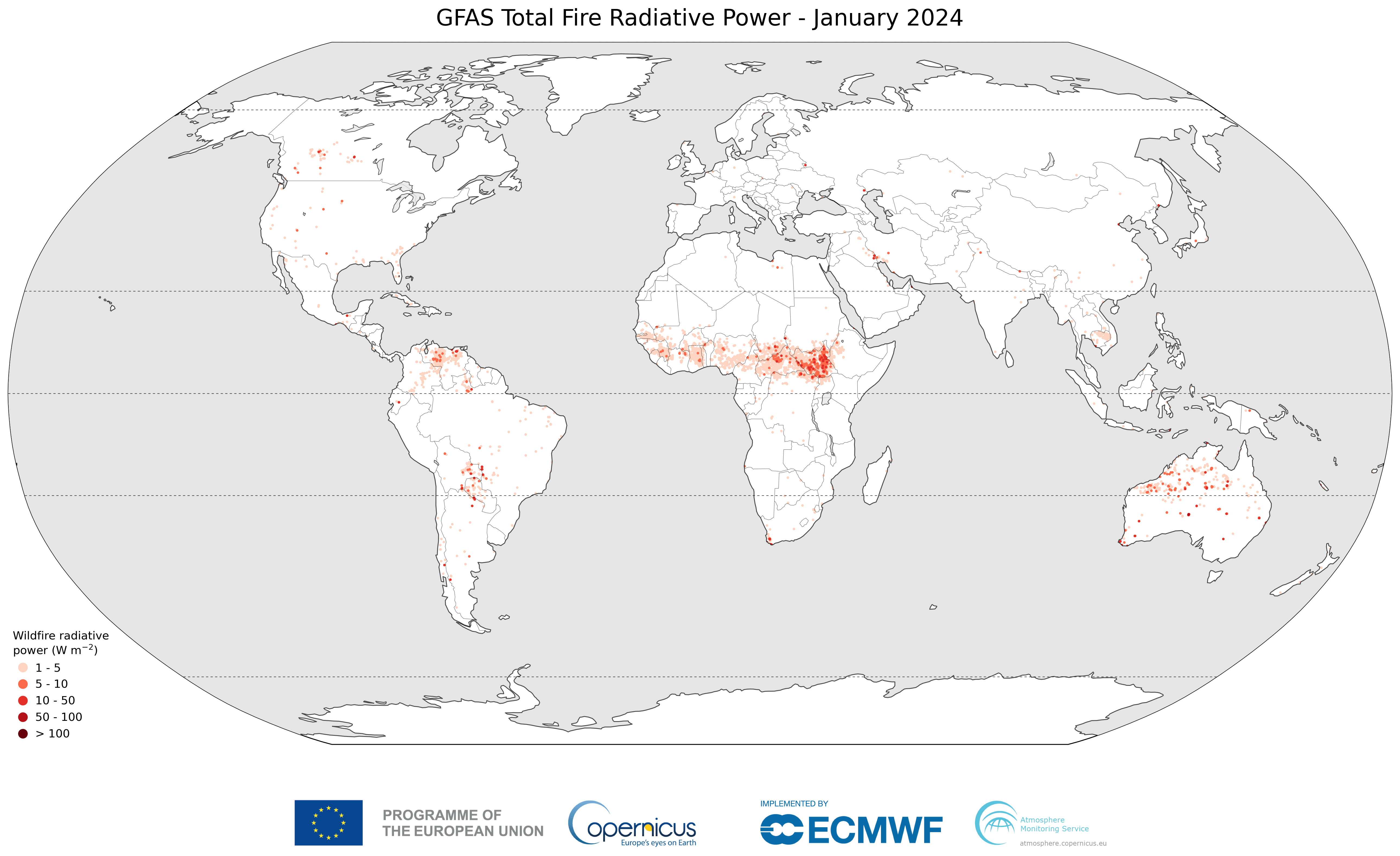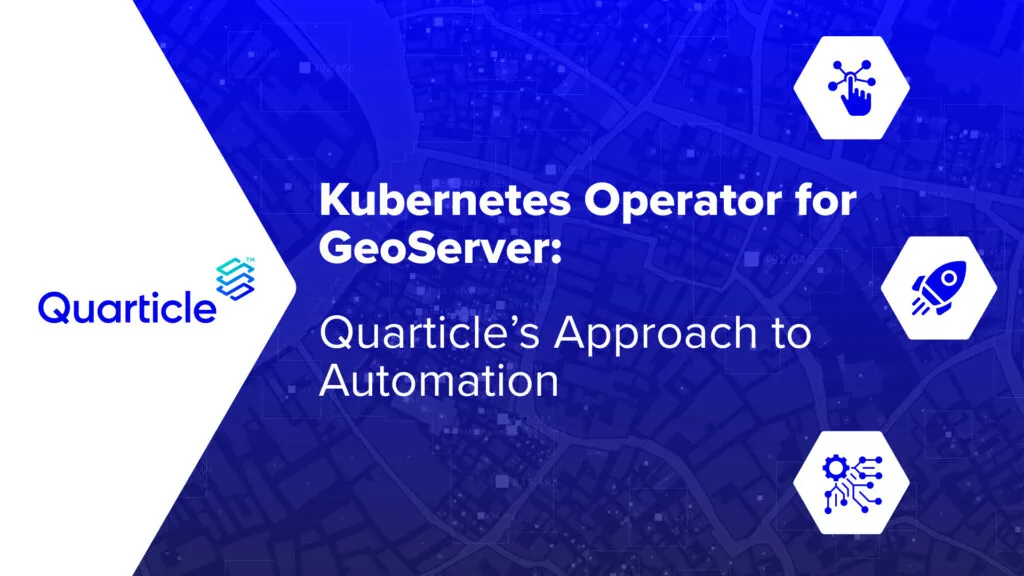
Kubernetes Operator for GeoServer: Quarticle’s Approach to Automation
Managing geospatial infrastructure at scale is not an easy task. As the demand for high-performance, cloud-native GIS solutions grows, automation becomes essential. This article explores how Quarticle leverages a Kubernetes (K8s) operator to streamline GeoServer Cloud management, integrating Helm templates, ArgoCD, and Vault to enhance scalability, reliability, and operational efficiency.
Why build a K8s operator for GeoServer?
Managing GeoServer instances can be time-consuming, particularly in large-scale deployments. Quarticle’s K8s operator was designed to address these challenges by focusing on:
- Automation and efficiency: Automate GeoServer workflows for smoother integration into larger data pipelines.
- Reliability through declarative configurations: Ensuring consistent performance with Kubernetes Custom Resource Definitions (CRDs) and Helm templates.
- Scalability and modernization: Transforming legacy systems into self-healing, cloud-native applications while enabling independent scaling.
K8s Operator as a piece of data management pipeline
How it works: The actual workflow
The K8s operator simplifies complex operations through a streamlined workflow:
- Triggering updates: The user commits Custom Resource Definitions or updated values files to a Git repository.
- Deployment automation: Helm templates deploy the updated configurations.
- Operator action: The K8s operator reacts to create, update, or delete events and interacts with the GeoServer REST API.
- Reconciliation: The operator maintains the desired state by continuously aligning Kubernetes and GeoServer objects.
Architecture overview
To further enhance efficiency, Quarticle integrates ArgoCD into the workflow:
- GitOps-driven deployments: Changes in the Git repository automatically trigger updates in GeoServer.
- Real-time updates: Continuous deployment ensures the system always aligns with source control, minimizing downtime and manual intervention.
Key challenges addressed
Quarticle’s implementation also tackles common hurdles in automating GeoServer, such as:
- Object lifecycle synchronization to maintain consistency across Kubernetes and GeoServer: Maintaining consistency between Kubernetes and GeoServer objects is critical for operational reliability, preventing data discrepancies that could disrupt workflows.
- Managing dependencies and integrating external resources: Advanced tools and methodologies simplify the inclusion of external resources, making workflows more modular and adaptable.
Quarticle solutions are fully OGC-compliant, ensuring seamless interoperability with open geospatial standards. This guarantees that organizations can integrate our tools effortlessly into existing GIS workflows while maintaining compatibility with industry-wide data exchange protocols. (OGC compliance enables better data sharing, ensures long-term sustainability, and aligns with best practices for geospatial system interoperability.)
Combining Kubernetes, Helm, ArgoCD, and Vault creates a robust framework for managing GeoServer resources with high reliability. As GeoServer Cloud development progresses, Quarticle remains committed to expanding support for additional objects and workflows, contributing to the broader GeoServer ecosystem.
About Quarticle
Quarticle is a technology-driven company specializing in cloud-native GIS solutions that enable organizations to process, analyze, and interpret geospatial data efficiently. Our high-performance, scalable, and secure solutions are built with open-source technologies, ensuring full interoperability and no vendor lock-in. We also offer expert GIS consulting, covering geodata engineering, software development, and DevOps, to help clients integrate and optimize geospatial systems within their existing infrastructure.
Partner with us
We’re looking for tech partners and innovators who share our passion for scalability, automation, and cloud-native geospatial solutions. If you’re interested in pushing the boundaries of GIS and cloud-native technology, let’s connect. Drop us a message at contact@quarticle.ro or visit www.quarticle.ro.

